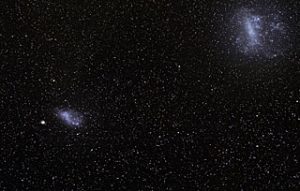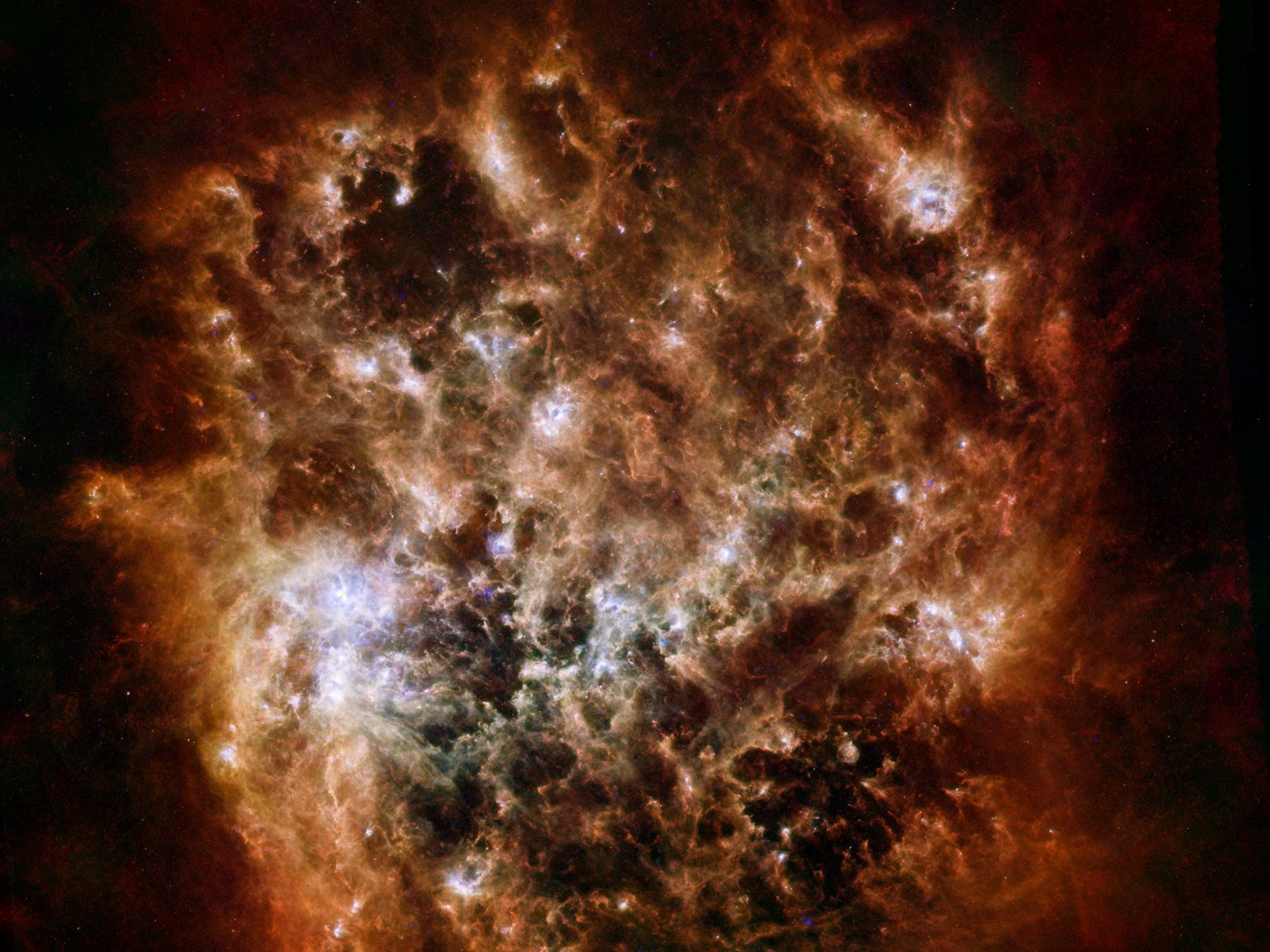| Basic Information | |
| What is this? | The Large Magellanic Cloud, a satellite galaxy of our own Milky Way |
| Where is it in the sky? | In the constellations of Dorado and Mensa |
| How big is it? | The Large Magellanic Cloud is around 1 tenth the diameter of the Milky Way, and around one hundredth the mass |
| How far away is it? | It is around 160,000 light years away from the centre of the Milky Way |
| What do the colours represent? | Red and green show colder material seen by Herschel, while blue is warmer dust seen by Spitzer |
Downloads
See this object in:
The Large Magellanic Cloud is a small galaxy that is orbitting our own Milky Way. At only around 14,000 light years across it is too small to have formed spiral arms, and has an irregular structure. In this image, combining data from both Herschel and NASA’s Spitzer space telescope, the dust between the stars takes on a fiery appearance. Embedded in the cool dust, seen in red and green, are regions of active star formation which appear blue and white. These warmer, denser regions are being heated by young stars within, with the brightest region being the Tarantula Nebula in the lower left.

In visible light only the bar across the centre of the galaxy shines brightly, and can be even seen with the naked eye from the southern hemisphere. It is joined in the night sky by the smaller, fainter Small Magellanic Cloud, and between them they allow the detailed study of star formation and evolution in a galaxy other than our own. The “Clouds of Magellan” are named after Portugese explorer Ferdinand Magellan who, while by no means the first to see them, observed them during his voyage of 1519.
“Studying these galaxies offers us the best opportunity to study star formation outside of the Milky Way,” said Margaret Meixner, an astronomer at the Space Telescope Science Institute, Baltimore, Md., and principal investigator for the mapping project. “Star formation affects the evolution of galaxies, so we hope understanding the story of these stars will answer questions about galactic life cycles.”
The Large Magellanic Cloud is the largest satellite galaxy of the Milky Way, and the fourth largest galaxy in our Local Group (after the Milky Way, Andromeda and Triangulum galaxies). Its diminuitive size means that the composition of the material is slightly different from that in the larger galaxies, being slightly defficient in heavier elements such as carbon and oxygen. This slows the cycle of starbith and death, giving astronomers a close-up view of the environment in which stars were forming billions of years ago.

